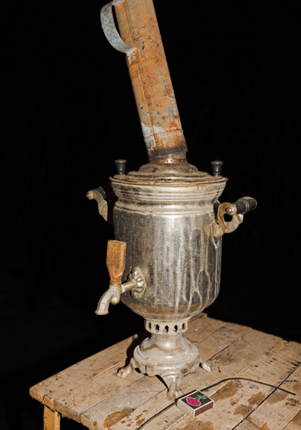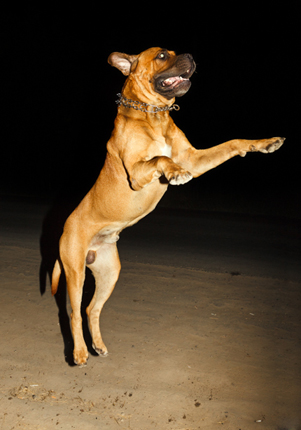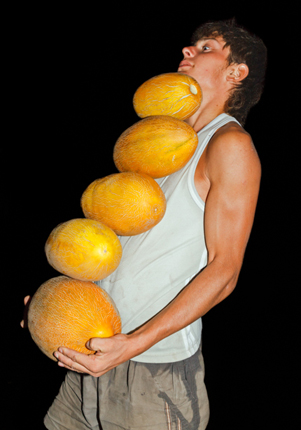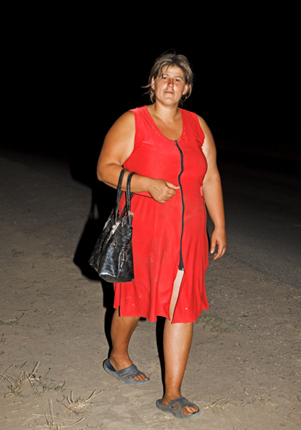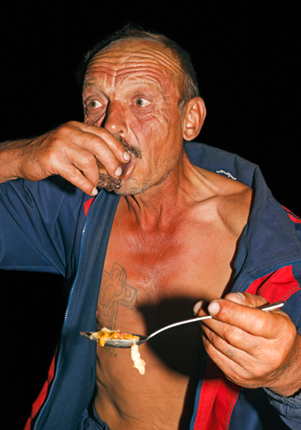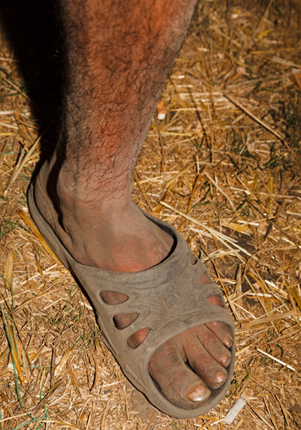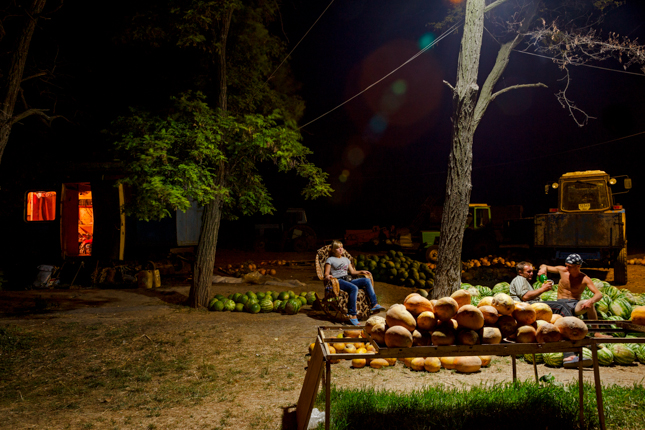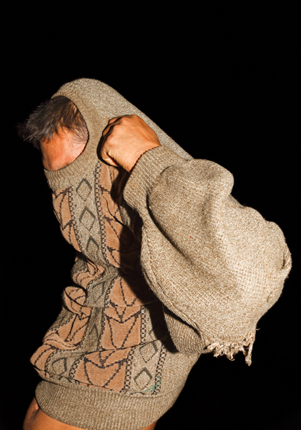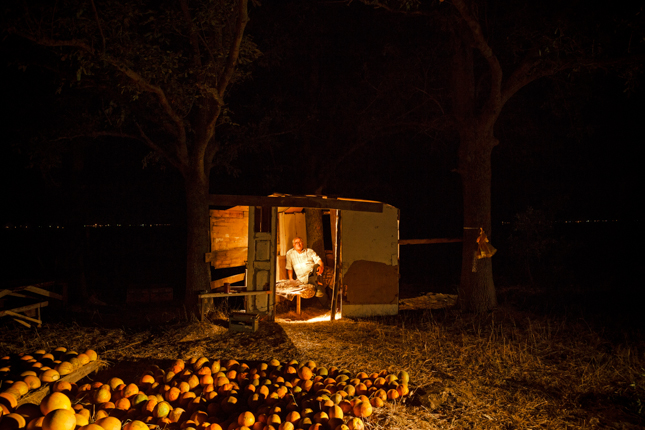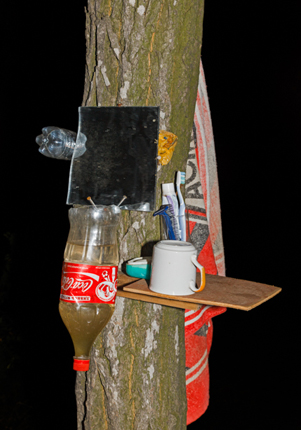What else could be done than referring to painting in view of Kirill Golovchenko’ Ukrainian night scenarios? Well, there are not too many market scenes in the history of painting which play at night. Most artists prefer the broad daylight for capturing the abundant fruits of the earth and their debonair pedlars on canvas. But at least one example for a more sombre scenery exists: It was painted in the 1630s by Parisian woman artist and genius of the still life genre Louise Moillon. Here something sinister comes into play: A pickpocket is stealing from a customer while she is examining the outspread merchandise. Some authors even assume the complicity of the merchant. So the night is background and symbol for a certain atmosphere of danger and man’s darker veins, in general for the struggle for survival and the misdemeanor it could bring people to. In the dramatically lit scenarios ‘Sodom and Gomorrah’ and ‘The destruction of Troy’ (both around 1595) by Dutch master of allegory Jan Brueghel the Elder, the people have other things on their minds than haggling or pilfering. In the first they enjoy themselves in grouplets in the great shady outdoors, disaster looming behind. In the second the masses take to their heels to get away from the threateningly blazing city in the background. The patchy lighting and some allegoric similitude connect these masterpieces to Kirill Golovchenko’s photographs of the 21st century roadsides of his native country Ukraine. He depicts a wide range of people living on the ‘tochka’, offering fruit according to season and also far more. ‘Tochka’ is a general term for sales point, sometimes also referring to prostitution. The merchants live close to their makeshift emporiums in tents and trailers, some build shacks for the summer months. Many come from Azerbaijan, Georgia, Armenia and mix with the locals along the strung-out markets. They dwell and sell alone or bring their families, kids growing up on the street. A microcosm has formed of very different people having one thing in common: they want to make money to simply get along or save up and improve their living conditions in their respective homelands where most return for the winter months, not making any money there at all. But Kirill Golovchenko’s pictures are also about compassion for these uprooted men and women. In his own almost bitterly poetic words: ‘Do you think, life is sweet when every car rushing by makes you cough and your teeth grind? When dust and dirt are an ingredient of your food, colour it and get into your blood, thicken it to honey? This wears you out, always you lose against that delirious fatigue… You try to dilute your blood with energy drinks by day, at night it’s vodka. But the holidaymakers won’t leave you alone. They fly in their cars towards your light bulb in the pitch dark, sucking out the life that is left in you like hungry gnats. The customers always know better about the prices of your melons and where they come from prices are always lower! But they want to buy from you. Past midnight you want to doze and also keep an
eye on your melons, thieves are plenty. Gnats bite you a dozen times, but you got used to that long ago, which is not true… Soon morning comes, calling to work again. Can you now imagine to ask the vendor in front of you if the melon really tastes like honey?’
Horst Kloever & Kirill Golovchenko





